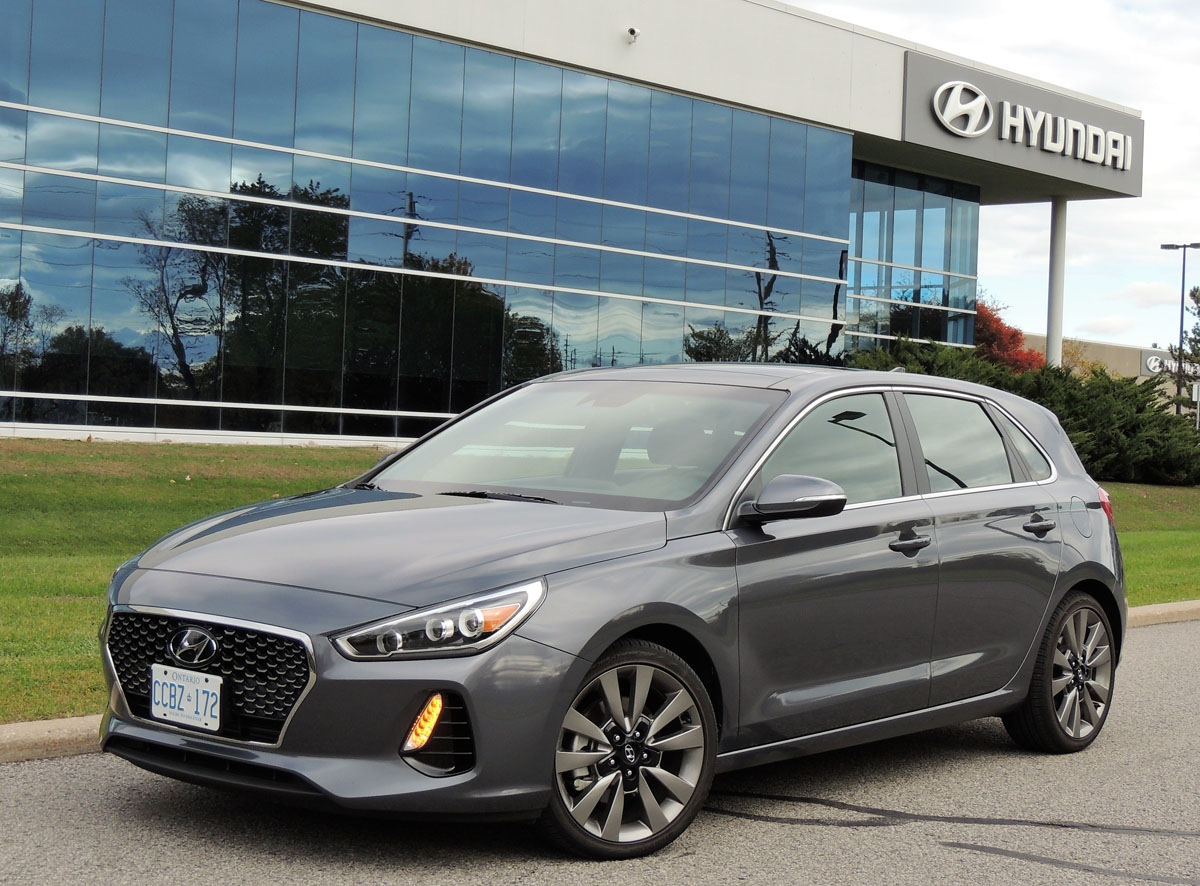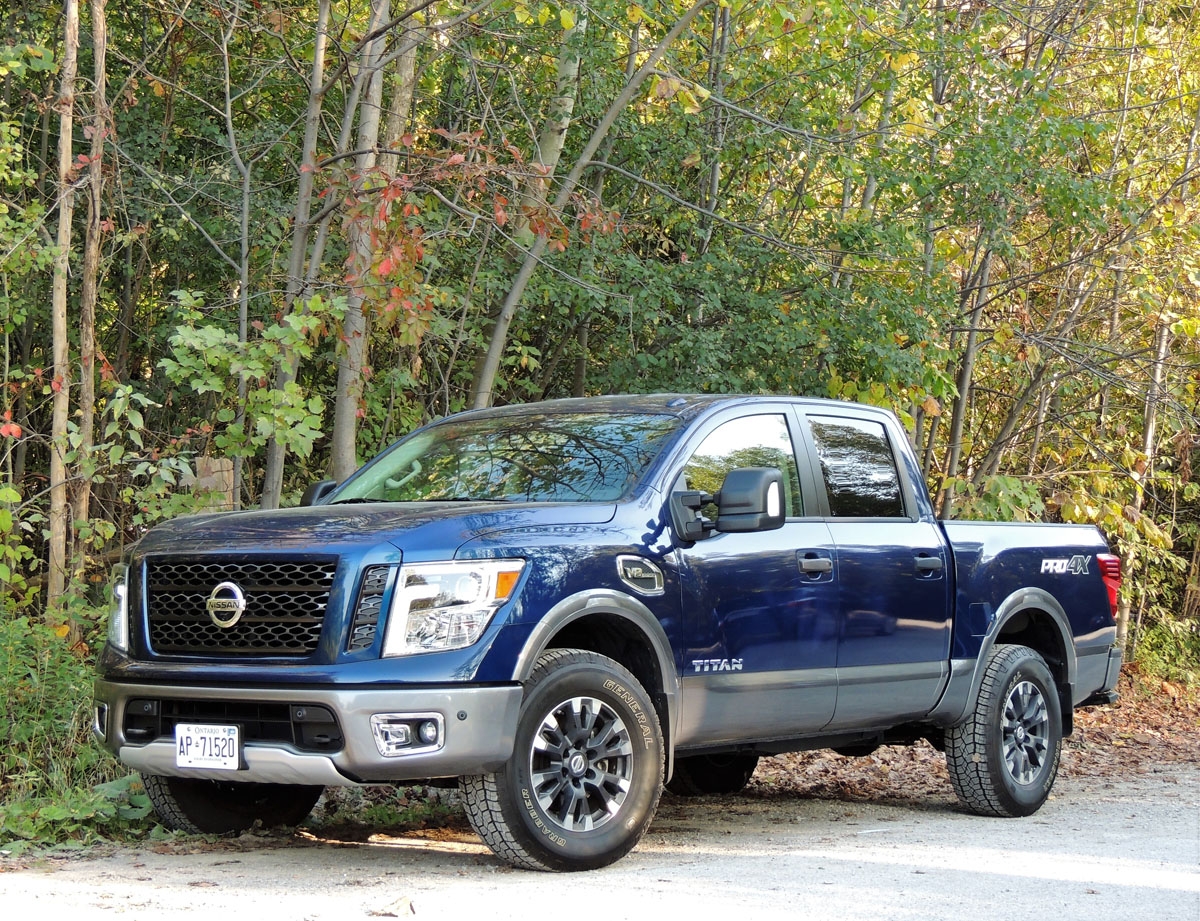
Year in review: my top-five rides for 2017
Photos by Neil Moore
Who doesn’t like “Top Five” lists? And who doesn’t expect a few this time of year?
At OLM we don’t employ that annoying clickbait technique, luring you in with a piece of eye candy – and compelling you to plow through 78 slides to find an image that never appears.
No folks, we respect your time, and what I’m providing here is a brief distillation from a year’s worth of road tests. Sure, it will include a 2018, but we all know that many of these have been in showrooms for weeks, if not months.
And this is entirely unscientific. I haven’t done a rigorous numerical rating and subsequent algorithm of the many metrics that play into performance, build quality, fuel efficiency, and the like. Rest assured, no statisticians have been harmed in the making of this story.
This is strictly from the gut, and from many years of reviewing rides – from smart cars to supercars. I’ve even let my teenage son weigh into the ‘analysis’. He’s been my co-pilot for most of these tests, and with his savant-like aptitude for car minutia, has strong opinions.
Not all of which align with my own. So without further adieu, here are my top picks from 2017.

#5: Subaru Forester
I’ll say it up front – this vehicle looks a bit dated. Here’s a quote from my Ottawa Life review:
“Sharper edges, high and rising beltlines, narrowing bands of glass be damned. Forester designers were a sensible bunch, opting instead for softer lines and big windows so that drivers can enjoy optimal visibility, and know exactly where their vehicle begins and ends.”
Which highlights a word that likely accounts for the Forester winning AJAC’s 2017 Utility Vehicle of the Year. And that word is “sensible.”
Forester offers class-leading cargo capacity (2,115 litres behind the first row), along with loads of head and leg room in the second row. Not bad for a compact SUV.
It is available with two engines, starting with the company’s proven 2.5-litre, horizontally-opposed, four-cylinder “boxer” engine (170 hp and 174 lb/ft of torque). It’s punchy, and delivers a nice little growl when wound up with a six-speed manual transmission.
Even more fun is the 2.0-litre boxer with twin-scroll turbocharger. This mill isn’t far off the rally-proven WRX, making 250 hp instead of 268, and with torque identical at 258 lb/ft, from a low 2,000 rpm.
Add in Subaru’s legendary symmetrical all-wheel-drive, and you not only have a practical family ride that performs, but one with serious off-road chops as well.

#4: Lincoln Continental
Until roughly 15 years ago, both Lincoln and Cadillac had the reputation of being “grandpa’s ride.” Big, pillowy sedans that took up an entire driveway, and seemed to float above the asphalt, making you wonder if you’d suddenly left for the great hereafter. Cadillac then decided they’d also like to sell to some of us younger folk.
Lincoln, on the other hand, stayed the course. Comfy and sedate vehicles, highlighted by oversized “waterfall” grilles that weren’t much to look at, but could probably cool a nuclear reactor.
Enter the Lincoln Continental.
This reboot of a nameplate that hasn’t been around since 2002 looks nothing like its predecessor, or most of the Lincoln lineup. Except the MKZ, which also shares the new – and far more fetching – signature front end.
I won’t get into exterior details – just look at the image and you’ll see a more modern look that is as ground breaking for the automaker as CTS was for Cadillac.
Lincoln continues this attention to style and detail on the inside where Continental truly lives up to its flagship status. Here’s a quote from my review:
“… real woods and metals – no tacky plastics and faux bling. The seats in my Reserve tester were wrapped in a perforated, saddle-brown leather. And although I could wax on about the buttery softness of the cowhide, more notable was the available 30-way adjustability that tailors the front buckets to your backside. You can even individually adjust right and left thigh cushions – or fire up the massagers.”
Power comes from either a 2.7-litre turbocharged V6 making 335 hp and 380 lb/ft of torque, or an optional twin-turbo 3.0-litre V6 that kicks out a solid 400 hp and 400 lb/ft of torque.

#3: Honda Civic Sedan and Coupe
The Civic has rightly earned its place as Canada’s top-selling car, but I once considered it a bit of a wallflower. Sure the coupe has always been a looker, but the sedan – which accounts for roughly 90 percent of Civic sales – has never turned my head.
Until now.
Longer and wider than last model, the tenth-generation Civic looks more athletic, wearing abundant creases and curves, muscular fenders and coupe-like roofline that flows into a short rear deck. It is also more rigid (with lots of high-tensile steel), has an upgraded suspension, torque vectoring, and improved steering.
Better yet are the new powertrains – in particular the 1.5-litre turbo four that delivers 174 hp and 162 lb/ft. of torque. If the latter figure doesn’t impress, consider that it’s on tap from a low 1,700 rpm, and that the previous Civic’s engine only produced a paltry 129 lb/ft.
Lower trim models come standard with a six-speed manual, and are mated to the less potent 2.0-litre i-VTEC (158 hp, 138 lb/ft). Still better than last generation.
Interiors are generous in terms of head and leg room, with the Coupe having less in rear due to its aggressively-sloped roofline. If you have the budget for Touring trim, the high-quality finishes and perforated leather deliver a more premium look and feel.

#2: Volvo V90 Wagon
Volvo’s flagship V90 Wagon (and slightly higher-riding V90 Cross Country) continue to demonstrate that the wagon is far from dead.
Sure, we nearly killed it in North America with the rusting, faux-woodgrained hulks that plied the roads when I was a teenager. But the European automakers have always been able to infuse these practical family haulers with performance and panache.
The V90 is big, but is low and wide, giving it a more athletic stance than taller, more cumbersome SUVs. And while proponents of the latter will crow about the benefits of all-wheel-drive, this Volvo has it, along with a lower centre of gravity for better handling and stability.
I’ve taken the V90 through a slalom course, and wove through the cones as easily as with a mid-size sport sedan, thanks to its taut, but still forgiving suspension.
Don’t be turned off by the four-cylinder powertrain. Sure, it begins with a 2.0-litre engine, but it’s boosted by both turbocharger and supercharger to deliver a respectable 316 hp and 295 lb/ft of torque. Despite its heft, the V90 will sprint from zero to 100 km/h in just 6.1 seconds.
Also impressive is the interior. Mine was a fully-loaded Inscription model with heated and cooled front seats, four-zone climate control with cooled glovebox, and open-pore, linear walnut trim on the dash and upper doors. I loved that natural wood, and wonder why other automakers lacquer it up to resemble plastic. Just sayin’…

#1: Hyundai Elantra GT
I liked the previous generation Elantra GT, but when I saw the new model, I was smitten. In this all-new 2018 Elantra, Hyundai has dropped the curvy ‘Fluidic Sculpture’ styling in favour of a more angular look. One that resembles the VW Golf – but with a bolder grille.
It comes in eight flavours, with lower-trim hatchbacks getting a 2.0-litre naturally-aspirated four cylinder, producing 162 hp and 150 lb/ft of torque. I drove the more potent Sport model with 1.6-litre turbo four that delivers 201 hp and 195 lb/ft of torque, starting from a low 1,500 rpm.
The 1.6-litre is mated to either a six-speed manual transmission, or seven-speed dual-clutch (with paddle shifters) that fires off gear changes without the slushy feel of a typical ‘manumatic’. Plant the pedal and the GT snaps to attention, with its tuned suspension quelling any harshness and reducing body roll. Steering is direct, and with decent feedback.
My tester’s interior was tastefully blinged up with pops of red surrounding the vents, HVAC unit, and centred on the flat-bottomed steering wheel. This theme is echoed in the red contrast stitching and piping in the leather sport buckets, as well as the red seatbelts.
Can the new GT take on the best from Europe? It has already gained a huge fanbase overseas, and with the many upgrades in style and substance, I suspect it will make an impact here as well.
*****************************************************
Well, that wraps up my faves for 2017. I will note my son also flagged the all-new Genesis G80 as an “honourable mention.” And with Hyundai recently launching Genesis as a stand-alone luxury brand, this model (along with the larger flagship G90) is a bold and positive step forward for the automaker.
He also gave a ‘thumbs up’ to Nissan Titan. This new-generation, now truly full-size pickup may have modeled itself after the best in North America, but that’s just being smart. Trucks are huge sellers in this market, and Nissan now has one that can compete not only in terms of power and capability, but in styling where the Titan has become one handsome hauler.













